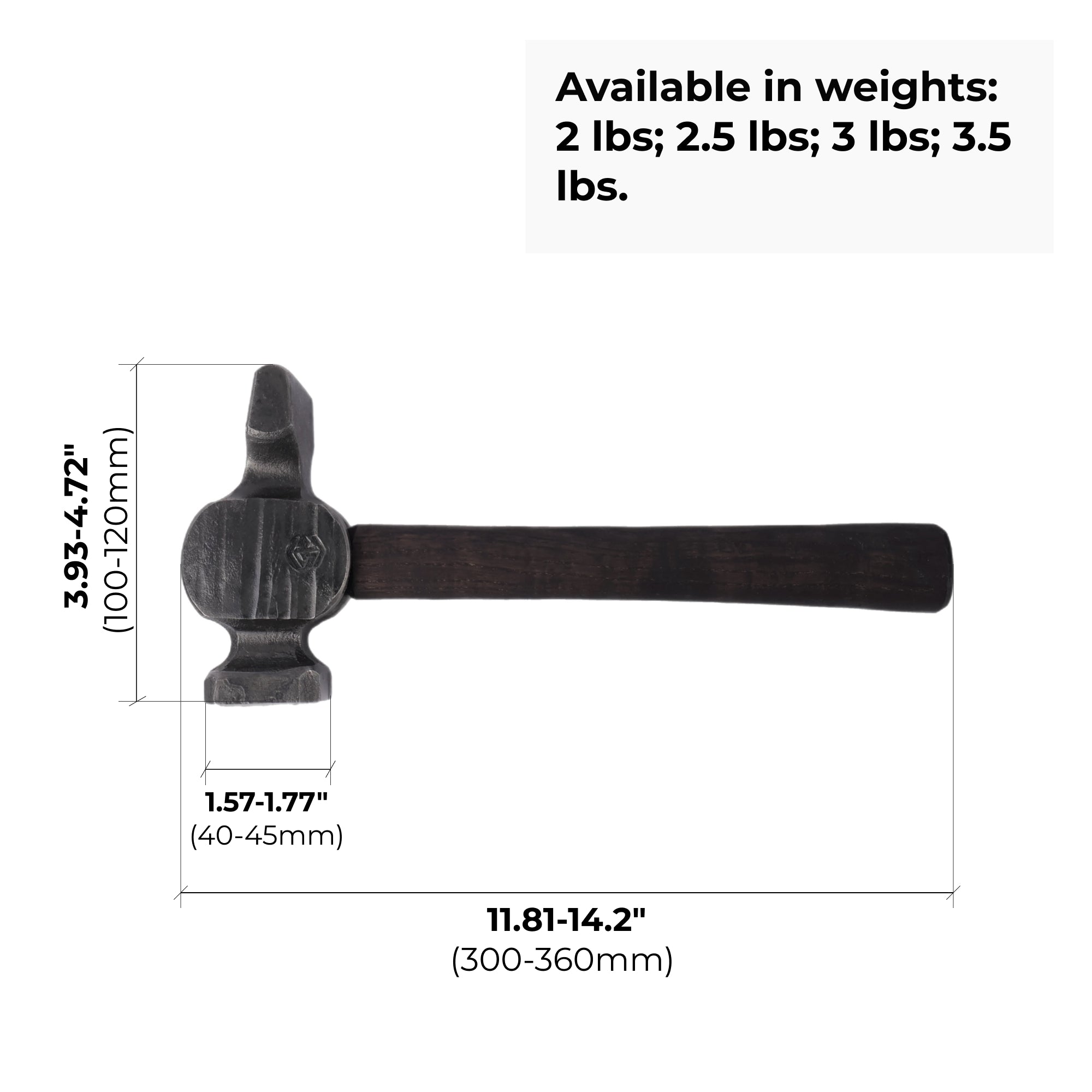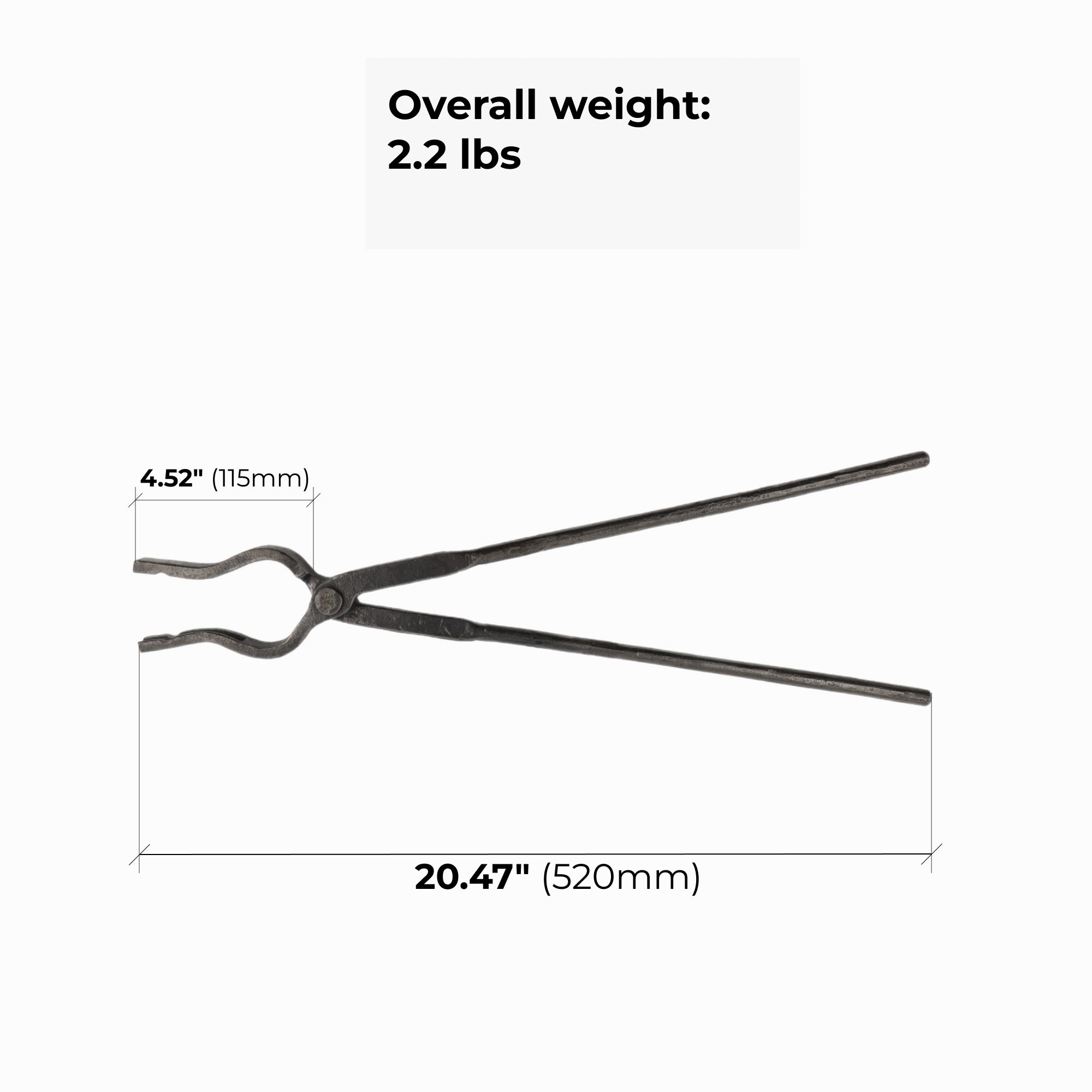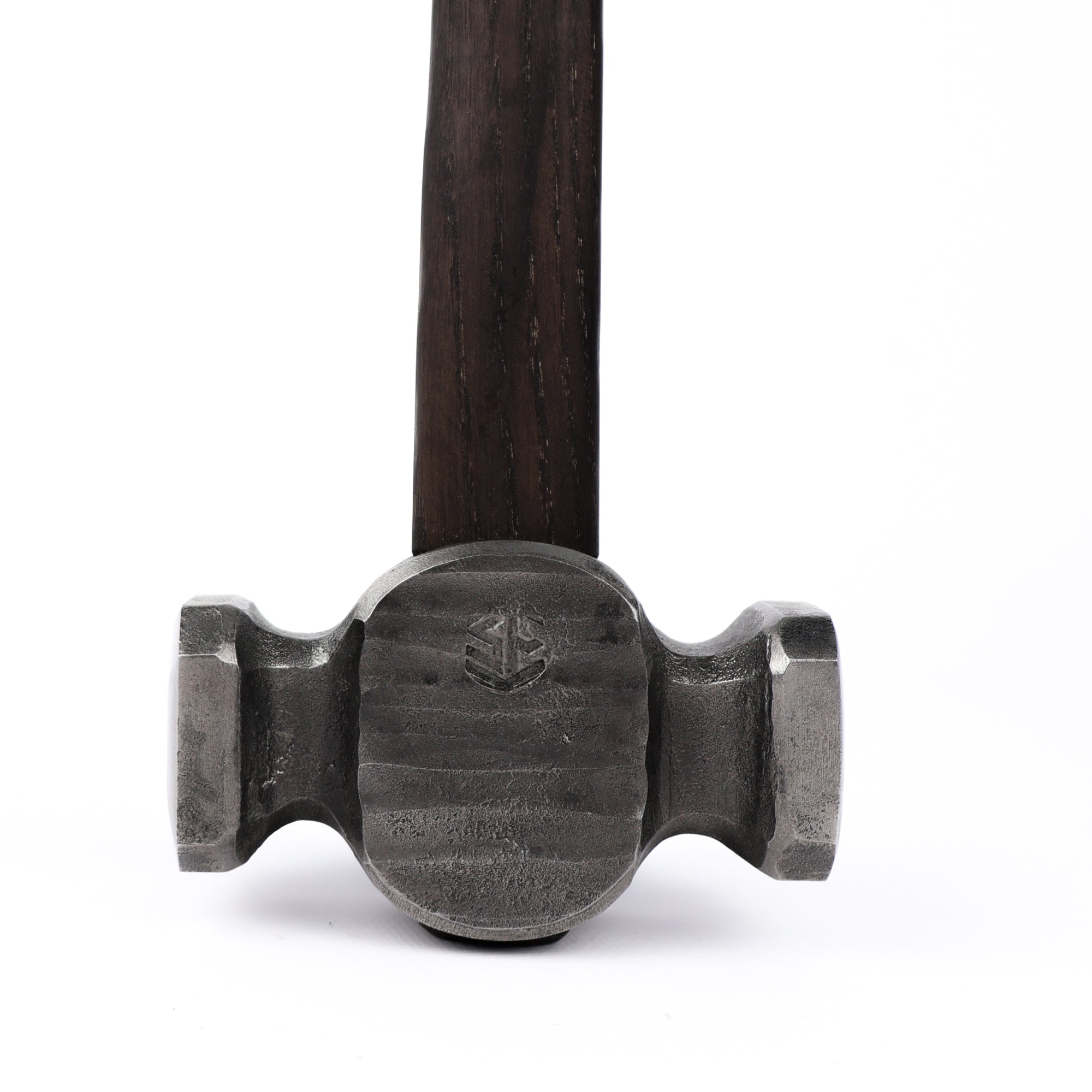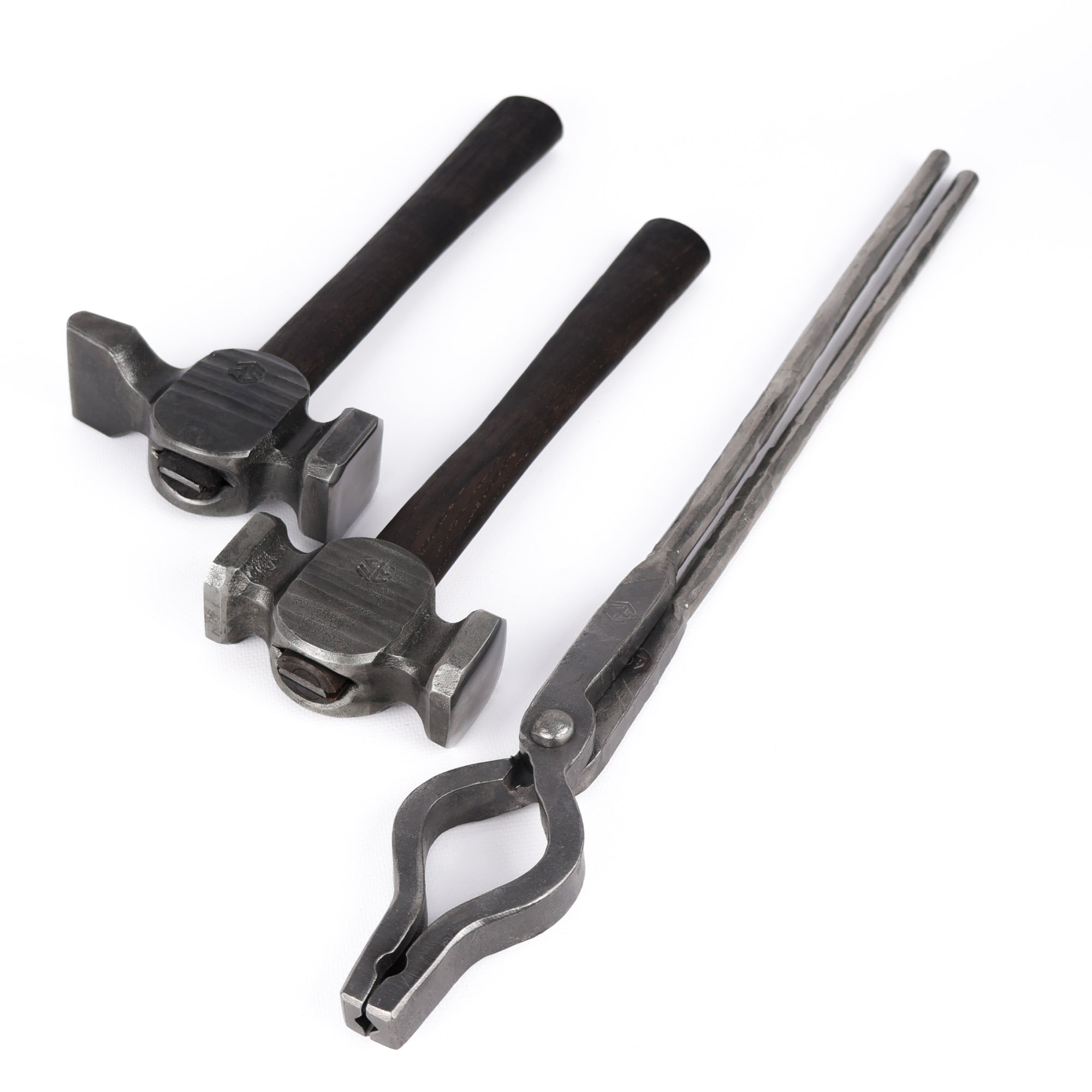













Blacksmith set of 3: Cross peen and rounding hammer with blacksmithing universal tongs
Blacksmith set of 3: Cross peen and rounding hammer with blacksmithing universal tongs
- Traditional style set of square circle rounding and cross-peen hammers, Hand forged from W108 steel. Head weights available range from 2lb - 3.5lb. Handles available cured and oil soaked, or boiled linseed oil soaked natural finish.
- Blacksmith Tongs: Work holding can be a difficult job and a dangerous one if your stock is not secure. There are no blacksmithing tongs nor knife making tools that will be totally universal. Types of tongs with the "universal" in the name generally indicate MORE versatility. Special blacksmith tongs and blacksmith pliers designed for holding certain sizes and shapes will always be the safest option, such as scrolling tongs and pliers. As a general rule tongs are not meant to be left on the stock while in the fire. Tongs that get hot enough to show color will likely lose their shape. There are always some processes that leaving tongs on the stock is helpful, but if there is another way than it is recommended. Therefore tong rings or tong locks should not be the norm. The amount of holding power a tong has is directly related to the length of the reins versus the length of the jaw or bit. Shorter jaws and longer reins give better grip.
- Hand forged hammer is made using free forging technique by an experienced blacksmith with more than 15 years of experience. This hammer with a heavy head and a flat back. This shape of the head is universal, because along with the striker you can work and the back, accelerating the metal. Work surfaces are heat treated to a hardness of HRC 50-55.
- Customization: I can engrave your any personalization on the handle.
Technical Details:
Overall length: 11.81-14.2" (300-360mm)
Overall weight: 2.0lbs; 2.5lbs; 3.0lbs; 3.5lbs (0.9kg; 1.13kg; 1.36kg; 1.57kg)
Head size: 3.93-4.72x1.57-1.96" (100-120x40-50mm)
Hardness: Rockwell 50-55(HRC)
Hardening:
We preheat the hammer to about 1200°F (649°C).
Then we increase the temperature to 1450°F to 1500°F (788°C to 816°C).
Quench the hammer in the water.
Tempering:
To reduce the brittleness and increase toughness, tempering is essential.
We clean the surface of the hammer to expose bare metal. This helps in monitoring the tempering colours.
We heat the hammer in an oven. Aim for a temperature between 400°F to 500°F (trying to get 225°C) for a good balance of hardness and toughness.
We hold the temperature for at least an hour per inch of thickness.
Then we allow the hammer to cool to room temperature.
Testing and Verification:
After tempering, we test the hammer's hardness using a Rockwell hardness tester.
Also, we have a simple rebound test. we strike the hammer against an anvil; it should rebound without chipping or deforming.
Choose options














Need help?
Frequently Asked Questions
Yes, we ship all over the world. We send by DHL, Fedex, UPS, USPS and other carriers depends on country.
Shipping costs depends on weight and will be added at checkout. We run discounts and promotions all year, so stay tuned for exclusive deals.
We try to keep all products in stock in our warehouse in Ukraine and USA. The processing time usually take 1-2days. The delivery time depends on where you are. The regular delivery takes 12-21 days. Express delivery takes 5-10 days. Delivery details with tracking number will be provided in your confirmation email.
My team and I are from Ukraine. Our manufacturing facility is based in the western part of Ukraine, in a safe location. It has not been affected by the war, and we continue working. We send parcels from Ukraine and from our warehouse in the US.
By default, you’ll get the same product as in the photos. Also, we offer additional engravings(text, logo, images) for an additional fee. Describe what you would like engraved in field: your personalization.
To maintain your hammer's longevity, periodically apply boiled linseed oil to both the handle and the hammerhead. It's natural for wooden handles to break sometimes. However, by oiling and being cautious with the hammer-handle connection, such as avoiding dropping it on its handle, you can prolong its life. Refrain from hitting hard surfaces with the hammer, as metal-on-metal contact can lead to dents and potentially hazardous chipping.
If the hammer's face shows signs of wear over time, you can refresh its appearance using a Trizact belt and a buffer. This will keep it looking neat and polished.
